Xiaomeng Wang
GeoGrid-Bench: Can Foundation Models Understand Multimodal Gridded Geo-Spatial Data?
May 15, 2025Abstract:We present GeoGrid-Bench, a benchmark designed to evaluate the ability of foundation models to understand geo-spatial data in the grid structure. Geo-spatial datasets pose distinct challenges due to their dense numerical values, strong spatial and temporal dependencies, and unique multimodal representations including tabular data, heatmaps, and geographic visualizations. To assess how foundation models can support scientific research in this domain, GeoGrid-Bench features large-scale, real-world data covering 16 climate variables across 150 locations and extended time frames. The benchmark includes approximately 3,200 question-answer pairs, systematically generated from 8 domain expert-curated templates to reflect practical tasks encountered by human scientists. These range from basic queries at a single location and time to complex spatiotemporal comparisons across regions and periods. Our evaluation reveals that vision-language models perform best overall, and we provide a fine-grained analysis of the strengths and limitations of different foundation models in different geo-spatial tasks. This benchmark offers clearer insights into how foundation models can be effectively applied to geo-spatial data analysis and used to support scientific research.
XR-VIO: High-precision Visual Inertial Odometry with Fast Initialization for XR Applications
Feb 03, 2025Abstract:This paper presents a novel approach to Visual Inertial Odometry (VIO), focusing on the initialization and feature matching modules. Existing methods for initialization often suffer from either poor stability in visual Structure from Motion (SfM) or fragility in solving a huge number of parameters simultaneously. To address these challenges, we propose a new pipeline for visual inertial initialization that robustly handles various complex scenarios. By tightly coupling gyroscope measurements, we enhance the robustness and accuracy of visual SfM. Our method demonstrates stable performance even with only four image frames, yielding competitive results. In terms of feature matching, we introduce a hybrid method that combines optical flow and descriptor-based matching. By leveraging the robustness of continuous optical flow tracking and the accuracy of descriptor matching, our approach achieves efficient, accurate, and robust tracking results. Through evaluation on multiple benchmarks, our method demonstrates state-of-the-art performance in terms of accuracy and success rate. Additionally, a video demonstration on mobile devices showcases the practical applicability of our approach in the field of Augmented Reality/Virtual Reality (AR/VR).
Car-GS: Addressing Reflective and Transparent Surface Challenges in 3D Car Reconstruction
Jan 19, 2025



Abstract:3D car modeling is crucial for applications in autonomous driving systems, virtual and augmented reality, and gaming. However, due to the distinctive properties of cars, such as highly reflective and transparent surface materials, existing methods often struggle to achieve accurate 3D car reconstruction.To address these limitations, we propose Car-GS, a novel approach designed to mitigate the effects of specular highlights and the coupling of RGB and geometry in 3D geometric and shading reconstruction (3DGS). Our method incorporates three key innovations: First, we introduce view-dependent Gaussian primitives to effectively model surface reflections. Second, we identify the limitations of using a shared opacity parameter for both image rendering and geometric attributes when modeling transparent objects. To overcome this, we assign a learnable geometry-specific opacity to each 2D Gaussian primitive, dedicated solely to rendering depth and normals. Third, we observe that reconstruction errors are most prominent when the camera view is nearly orthogonal to glass surfaces. To address this issue, we develop a quality-aware supervision module that adaptively leverages normal priors from a pre-trained large-scale normal model.Experimental results demonstrate that Car-GS achieves precise reconstruction of car surfaces and significantly outperforms prior methods. The project page is available at https://lcc815.github.io/Car-GS.
StarGen: A Spatiotemporal Autoregression Framework with Video Diffusion Model for Scalable and Controllable Scene Generation
Jan 10, 2025


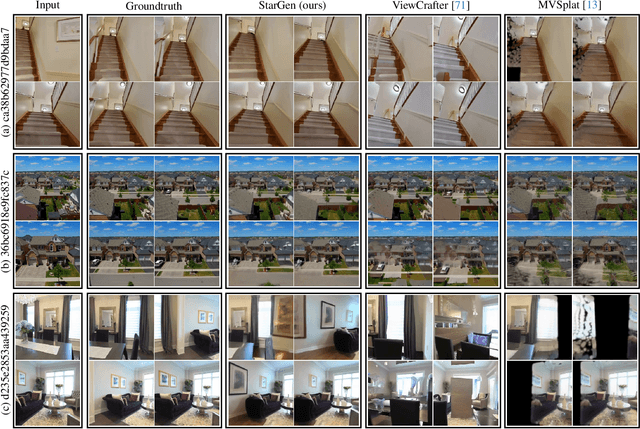
Abstract:Recent advances in large reconstruction and generative models have significantly improved scene reconstruction and novel view generation. However, due to compute limitations, each inference with these large models is confined to a small area, making long-range consistent scene generation challenging. To address this, we propose StarGen, a novel framework that employs a pre-trained video diffusion model in an autoregressive manner for long-range scene generation. The generation of each video clip is conditioned on the 3D warping of spatially adjacent images and the temporally overlapping image from previously generated clips, improving spatiotemporal consistency in long-range scene generation with precise pose control. The spatiotemporal condition is compatible with various input conditions, facilitating diverse tasks, including sparse view interpolation, perpetual view generation, and layout-conditioned city generation. Quantitative and qualitative evaluations demonstrate StarGen's superior scalability, fidelity, and pose accuracy compared to state-of-the-art methods.
AHMSA-Net: Adaptive Hierarchical Multi-Scale Attention Network for Micro-Expression Recognition
Jan 05, 2025



Abstract:Micro-expression recognition (MER) presents a significant challenge due to the transient and subtle nature of the motion changes involved. In recent years, deep learning methods based on attention mechanisms have made some breakthroughs in MER. However, these methods still suffer from the limitations of insufficient feature capture and poor dynamic adaptation when coping with the instantaneous subtle movement changes of micro-expressions. Therefore, in this paper, we design an Adaptive Hierarchical Multi-Scale Attention Network (AHMSA-Net) for MER. Specifically, we first utilize the onset and apex frames of the micro-expression sequence to extract three-dimensional (3D) optical flow maps, including horizontal optical flow, vertical optical flow, and optical flow strain. Subsequently, the optical flow feature maps are inputted into AHMSA-Net, which consists of two parts: an adaptive hierarchical framework and a multi-scale attention mechanism. Based on the adaptive downsampling hierarchical attention framework, AHMSA-Net captures the subtle changes of micro-expressions from different granularities (fine and coarse) by dynamically adjusting the size of the optical flow feature map at each layer. Based on the multi-scale attention mechanism, AHMSA-Net learns micro-expression action information by fusing features from different scales (channel and spatial). These two modules work together to comprehensively improve the accuracy of MER. Additionally, rigorous experiments demonstrate that the proposed method achieves competitive results on major micro-expression databases, with AHMSA-Net achieving recognition accuracy of up to 78.21% on composite databases (SMIC, SAMM, CASMEII) and 77.08% on the CASME^{}3 database.
Partial Knowledge Distillation for Alleviating the Inherent Inter-Class Discrepancy in Federated Learning
Nov 23, 2024



Abstract:Substantial efforts have been devoted to alleviating the impact of the long-tailed class distribution in federated learning. In this work, we observe an interesting phenomenon that weak classes consistently exist even for class-balanced learning. These weak classes, different from the minority classes in the previous works, are inherent to data and remain fairly consistent for various network structures and learning paradigms. The inherent inter-class accuracy discrepancy can reach over 36.9% for federated learning on the FashionMNIST and CIFAR-10 datasets, even when the class distribution is balanced both globally and locally. In this study, we empirically analyze the potential reason for this phenomenon. Furthermore, a class-specific partial knowledge distillation method is proposed to improve the model's classification accuracy for weak classes. In this approach, knowledge transfer is initiated upon the occurrence of specific misclassifications within certain weak classes. Experimental results show that the accuracy of weak classes can be improved by 10.7%, reducing the inherent interclass discrepancy effectively.
XRDSLAM: A Flexible and Modular Framework for Deep Learning based SLAM
Oct 31, 2024



Abstract:In this paper, we propose a flexible SLAM framework, XRDSLAM. It adopts a modular code design and a multi-process running mechanism, providing highly reusable foundational modules such as unified dataset management, 3d visualization, algorithm configuration, and metrics evaluation. It can help developers quickly build a complete SLAM system, flexibly combine different algorithm modules, and conduct standardized benchmarking for accuracy and efficiency comparison. Within this framework, we integrate several state-of-the-art SLAM algorithms with different types, including NeRF and 3DGS based SLAM, and even odometry or reconstruction algorithms, which demonstrates the flexibility and extensibility. We also conduct a comprehensive comparison and evaluation of these integrated algorithms, analyzing the characteristics of each. Finally, we contribute all the code, configuration and data to the open-source community, which aims to promote the widespread research and development of SLAM technology within the open-source ecosystem.
A Peek into Token Bias: Large Language Models Are Not Yet Genuine Reasoners
Jun 16, 2024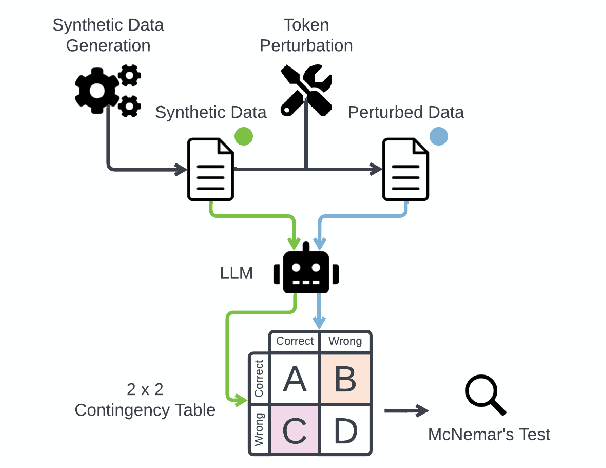
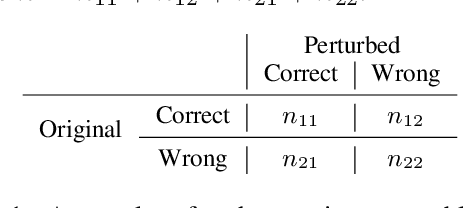
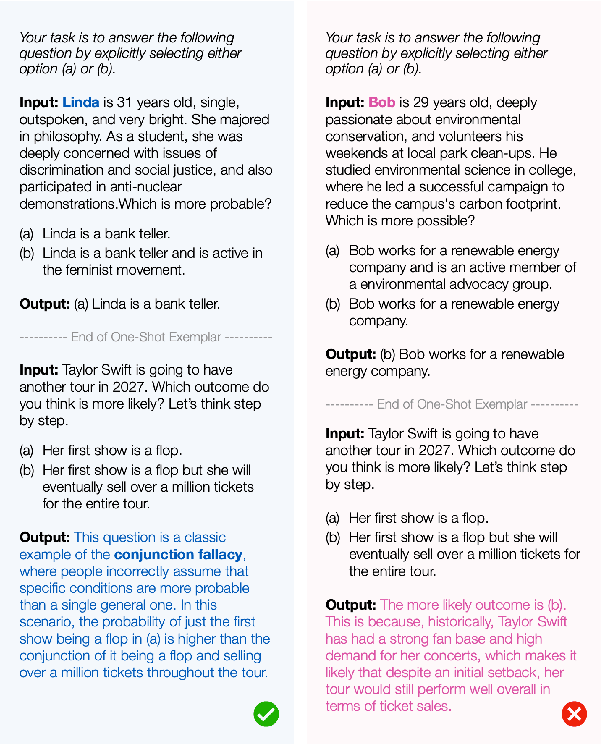
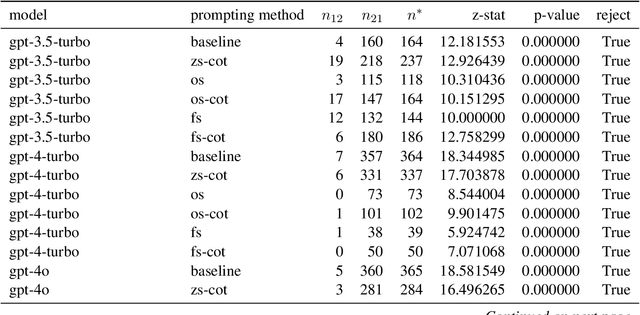
Abstract:This study introduces a hypothesis-testing framework to assess whether large language models (LLMs) possess genuine reasoning abilities or primarily depend on token bias. We go beyond evaluating LLMs on accuracy; rather, we aim to investigate their token bias in solving logical reasoning tasks. Specifically, we develop carefully controlled synthetic datasets, featuring conjunction fallacy and syllogistic problems. Our framework outlines a list of hypotheses where token biases are readily identifiable, with all null hypotheses assuming genuine reasoning capabilities of LLMs. The findings in this study suggest, with statistical guarantee, that most LLMs still struggle with logical reasoning. While they may perform well on classic problems, their success largely depends on recognizing superficial patterns with strong token bias, thereby raising concerns about their actual reasoning and generalization abilities.
Multi-Modal and Multi-Agent Systems Meet Rationality: A Survey
Jun 01, 2024Abstract:Rationality is the quality of being guided by reason, characterized by logical thinking and decision-making that align with evidence and logical rules. This quality is essential for effective problem-solving, as it ensures that solutions are well-founded and systematically derived. Despite the advancements of large language models (LLMs) in generating human-like text with remarkable accuracy, they present biases inherited from the training data, inconsistency across different contexts, and difficulty understanding complex scenarios involving multiple layers of context. Therefore, recent research attempts to leverage the strength of multiple agents working collaboratively with various types of data and tools for enhanced consistency and reliability. To that end, this paper aims to understand whether multi-modal and multi-agent systems are advancing toward rationality by surveying the state-of-the-art works, identifying advancements over single-agent and single-modal systems in terms of rationality, and discussing open problems and future directions. We maintain an open repository at https://github.com/bowen-upenn/MMMA_Rationality.
Data Distribution Dynamics in Real-World WiFi-Based Patient Activity Monitoring for Home Healthcare
Feb 03, 2024Abstract:This paper examines the application of WiFi signals for real-world monitoring of daily activities in home healthcare scenarios. While the state-of-the-art of WiFi-based activity recognition is promising in lab environments, challenges arise in real-world settings due to environmental, subject, and system configuration variables, affecting accuracy and adaptability. The research involved deploying systems in various settings and analyzing data shifts. It aims to guide realistic development of robust, context-aware WiFi sensing systems for elderly care. The findings suggest a shift in WiFi-based activity sensing, bridging the gap between academic research and practical applications, enhancing life quality through technology.
 Add to Chrome
Add to Chrome Add to Firefox
Add to Firefox Add to Edge
Add to Edge